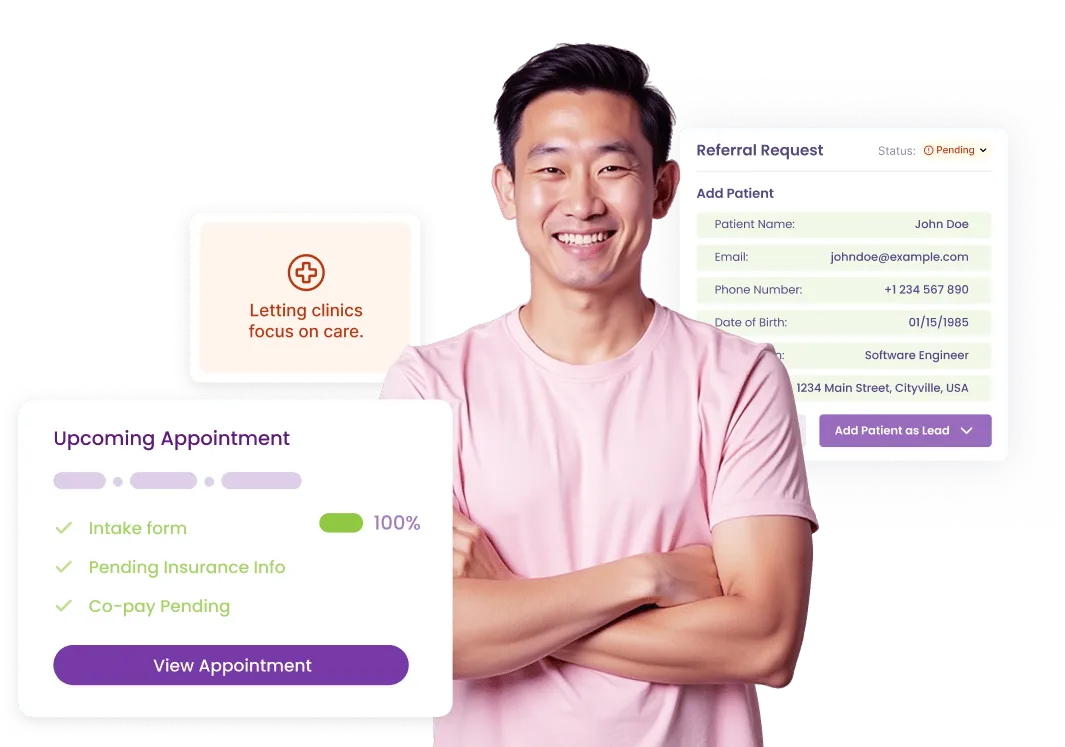99495 – Care Management / Collaborative Care Service
CPT code 99495 represents a distinct mental or behavioral health service, including evaluation, therapy, or care coordination.
What is CPT
99495
?
99495 is a healthcare billing code utilized primarily in the context of collaborative care within care management services. This code facilitates the coordination of treatment among various healthcare providers, ensuring that patients receive comprehensive and integrated mental health care. This entry provides an in-depth overview of the clinical purpose of CPT code 99495, outlines documentation expectations, and highlights key payer considerations. Providers are encouraged to align their clinical notes with evidence-based interventions, documenting treatment goals, the specific interventions employed, and any measurable progress observed. In instances where this code is billed based on time, it is imperative to accurately record the start and stop times to substantiate the billed duration.

Documentation Tips
Accurate documentation is critical when billing for services under CPT code 99495. Clinicians should meticulously document start and stop times for any time-based psychotherapy sessions. It is essential to include details about the therapeutic modality utilized, any assessment instruments employed, the clinical focus of the session, patient responses, and a well-defined plan for follow-up care. For sessions that involve scored instruments, maintain copies of the completed assessment tools in the patient’s record. In the case of telehealth services, ensure that you document patient consent, the platform used for the session, and adherence to relevant regulations. Consistency in using structured documentation formats such as SOAP (Subjective, Objective, Assessment, Plan) or DAP (Data, Assessment, Plan) is highly recommended to ensure audit readiness and to facilitate seamless communication among care team members.

At a Glance
- Service Type: Care Management
- Use Case: Collaborative Care
- Typical Setting: Outpatient clinic or telehealth (subject to payer policy)
- Billing Unit: Per session / per instrument (varies by code)
- Common Pairings: 90791, 96127, and various psychotherapy codes
Billing Examples
Clinical interactions that employ CPT code 99495 should consistently link findings to treatment planning and measurable goals. Documentation must reflect the clinical necessity of each billed service. For instance, if a clinician conducts a session aimed at managing a patient’s anxiety, they should document specific symptoms, the interventions applied (such as cognitive behavioral therapy techniques), and the patient’s response to these interventions. This might look like: "Patient engaged in cognitive restructuring to address negative thought patterns. Patient reported a 30% decrease in anxiety levels. Follow-up planned in one week to reassess symptoms and adjust treatment plan as necessary." Such detailed documentation not only justifies the use of the code but also enhances the overall quality of care provided.
Compliance Guidelines
- It is crucial to verify payer coverage and authorization requirements before billing for services associated with CPT code 99495. Each payer may have specific guidelines regarding the use of this code.
- Documentation must clearly establish medical necessity, linking services provided to appropriate ICD-10 diagnoses. Ensure that the diagnosis codes chosen align with the services rendered.
- Be mindful of using the correct modifiers as required by payer policies. For instance, when billing for telehealth services, the 95 modifier should be applied.
- Avoid upcoding; select the code that accurately reflects the documented time and level of service provided. This ensures compliance and minimizes the risk of audits.
- Conduct periodic audits of billing practices and documentation to identify areas for improvement. Regular reviews can help minimize claim denials and enhance the quality of documentation.
Common ICD-10 Codes
Helpful links for mental health billing and documentation
- F32.1
- F33.9
- Z63.5
- F41.9
Additional Resources
Helpful links for mental health billing and documentation
Related CPT Codes
Helpful links for mental health billing and documentation
Got questions? We’ve got answers.
Need more help? Reach out to us.
Q1: What is this code used for?
A: CPT code 99495 is utilized when the clinical activity aligns with the definition of the code; it is essential that documentation substantiates the billed service.
Q2: Can it be billed via telehealth?
A: Yes, many payers cover telehealth services when the interaction is synchronous. Ensure that proper modifiers and consent documentation are recorded according to payer policy.
Q3: What documentation will payers request?
A: Payers typically request documentation detailing the time spent, therapeutic techniques or instruments used, patient responses, and a clear linkage to a covered ICD-10 diagnosis.
Q4: Can this be billed with other services?
A: Yes, when billing for multiple services, it is crucial to document distinct time and rationale for each service. Consider using add-on codes or follow the Evaluation and Management (E/M) separation rules where applicable.
Q5: What are common denial reasons?
A: Common reasons for claim denials include missing time records, insufficient documentation of medical necessity, incorrect modifier use, or exceeding frequency limits set by payers.

